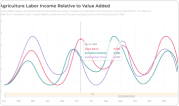- Economic
- Agriculture
- Construction
- Finance
- Labor
- Employment to Population Ratio
- Female Employment to Population Ratio
- Female Labor Force Participation
- Female Unemployment Rate
- Labor Force Participation Rate
- Male Employment to Population Ratio
- Male Labor Force Participation Rate
- Male Unemployment Rate
- Not in Education, Emoloyment, or Training
- Unemployment Rate
- Working Student
- Macroeconomics
- Manufacturing
- Mining
- Services
- Trade and Hospitality
- Transportation and Communication
- Utilities
- Environmental
- Social
- All Data
Villages with Base Transceiver Stations
Villages with Base Transceiver Stations
Villages with Base Transceiver Stations
| Province | Pct bts_availability |
|---|
Source
The indicator reports the percentage of villages within a boundary area that have base transceiver stations (BTS) towers installed within their villages. The BTS presence data is taken from the 2011-2019 Village Potential (Podes) data.
As internet use permeates people's daily lives, the demand for better internet signals has increased in the past decade. This is reflected in the increase in the percentage of villages with Base Transceiver Station (BTS) towers; in 2011, there had only been 27% of villages with BTS towers. However, by 2019, this figure had risen substantially to 41%. Provinces with more developed economies tend to have larger BTS penetrations. For example, in 2019, 91% of villages in DKI Jakarta has already possessed at least one BTS tower. This stands in contrast with provinces Papua and Papua Barat, wherein BTS towers were only present in 13% and 8% of all villages (respectively).
Villages with Base Transceiver Stations
Unit :
Interval : undefinedly -
Villages with Base Transceiver Stations
Unit :
Interval : Yearly



